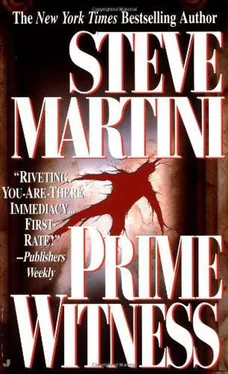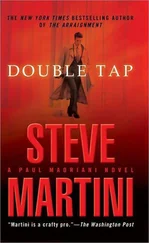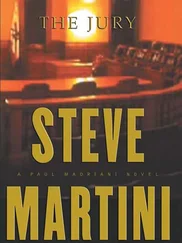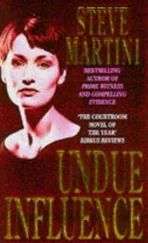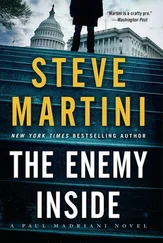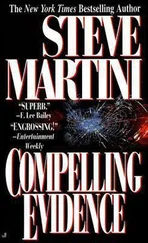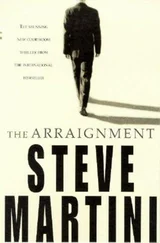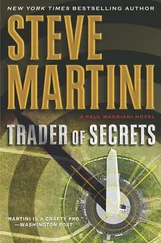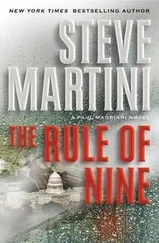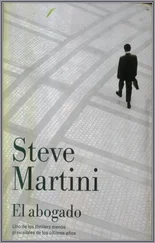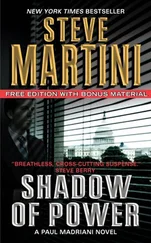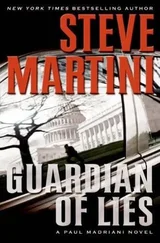Steve Martini - Prime Witness
Здесь есть возможность читать онлайн «Steve Martini - Prime Witness» весь текст электронной книги совершенно бесплатно (целиком полную версию без сокращений). В некоторых случаях можно слушать аудио, скачать через торрент в формате fb2 и присутствует краткое содержание. Год выпуска: 1992, ISBN: 1992, Издательство: Jove, Жанр: Триллер, на английском языке. Описание произведения, (предисловие) а так же отзывы посетителей доступны на портале библиотеки ЛибКат.
- Название:Prime Witness
- Автор:
- Издательство:Jove
- Жанр:
- Год:1992
- ISBN:9780515112641
- Рейтинг книги:5 / 5. Голосов: 1
-
Избранное:Добавить в избранное
- Отзывы:
-
Ваша оценка:
- 100
- 1
- 2
- 3
- 4
- 5
Prime Witness: краткое содержание, описание и аннотация
Предлагаем к чтению аннотацию, описание, краткое содержание или предисловие (зависит от того, что написал сам автор книги «Prime Witness»). Если вы не нашли необходимую информацию о книге — напишите в комментариях, мы постараемся отыскать её.
Prime Witness — читать онлайн бесплатно полную книгу (весь текст) целиком
Ниже представлен текст книги, разбитый по страницам. Система сохранения места последней прочитанной страницы, позволяет с удобством читать онлайн бесплатно книгу «Prime Witness», без необходимости каждый раз заново искать на чём Вы остановились. Поставьте закладку, и сможете в любой момент перейти на страницу, на которой закончили чтение.
Интервал:
Закладка:
“Then I guess we can say that at least we’ve got one of them.” Sellig deadpans this as she gives me the news.
“A copycat?” I say.
She nods.
I cannot say that I am surprised. It was something I had seen that day, outside Iganovich’s apartment door, as police searched inside.
I’m wiping sleep from my eyes. I have been on the phone with the State Department in Washington since six this morning, being briefed on the U.S.-Canadian extradition treaty. Iganovich is making noises of a legal battle to come. He is refusing to waive extradition.
“I wanted to break the news to you first,” she says. “I haven’t told any of the investigators yet. I can’t stand crying.”
She is right. Emil and company have been busy for the last twenty-four hours, spreading the official line to every reporter who will listen, that citizens in Davenport, undergraduates at the university, are again safe, that from all appearances they have caught their killer. They are telling community leaders that they can now get back to what they do best, business.
“You’re sure about this?” I say.
“No conclusive evidence,” she says, “nothing I could give to a court. But the discrepancies, they keep piling up. If you’re asking me my opinion, the answer is yes. Someone is mimicking our killer. And I’m not alone in this feeling. Have you talked to Lloyd Tolar, the medical examiner?”
I shake my head.
“You should,” she says.
“How would a copycat have the details, the folded clothes, the kind of rope, the stakes?” I say. It is an axiom in the business of serial crime that police will withhold certain details from the press and public, a means of testing the compulsive confessors, the small and elite legion of crazies who plague every sensational case.
“In this case he could have gotten enough from news photos,” she says. “God knows we’ve gotten the coverage.”
She is right. There have been a dozen pictures, two in national news magazines that showed the victims tied to the ground, a little editorial taste to blank-out the faces and genitals. There were closeup window shots of the stakes, and the rope, and the clothes folded in an arc like a halo over the victims’ heads.
Sellig moves to one of the other stainless steel tables. The surface is divided into three separate sections, each containing several pieces of cord and some metal tent stakes, shiny and new. The cord is the kind my mother used when I was a child to hang clothes on the line in our yard, bundled pieces of thread wrapped in a white plastic sheathing.
She picks out four of the stakes and moves these to another nearby table. They look like the others, except these have been taken down on a grinder to a needle-like sharpness. They resemble nothing so much as the point on a dagger.
“These,” she says, “were used to kill the first four victims, the college kids.”
There are two remaining stakes in this group, like the others store-bought, but with more rounded points. These have not been modified.
“The two here,” she says, “were used to kill the Scofield victims.” She raises an eyebrow and moves on, to the other end of the table, where assorted pieces of rope are assembled in plastic trays.
“Garden variety clothesline,” she says. “You can buy it in ten thousand stores, across the country. Except that,” she says, “these pieces”-she’s sweeping her hand over the first two trays, the rope from the student killings-“these pieces each came from the same length of rope, each cut in sequence. It matches the stuff found in Iganovich’s van. It also matches the rope used in Oregon and Orange County. From what I can see, Iganovich did ’em all.”
I remember her discourse on the subject, the affidavit used to search the Russian’s apartment.
“The extrusion marks from the thread filaments on the inside of the plastic sheathing, they all match,” she says.
She moves to the last tray, the cord used to tie Abbott and Karen Scofield to the ground.
“Here we have a different kind of rope,” she says. “A hundred and twenty-seven plastic filaments and different chemical composition. Produced by a different manufacturer.”
She waits for a moment, a pause for effect, to let this settle in.
“It was only what he couldn’t see from the photos, the buried points on the stakes, and the composition of the cord, where he went wrong.”
I say nothing. I just listen. It is not what I want to hear. I am thinking maybe this guy just bought another rope, maybe his grinder broke down.
But she is dashing my hopes. “Too many other discrepancies,” she says. “The fact that victim identifications, driver’s licenses, wallets or purses weren’t found on any of the kids. Yet Karen Scofield’s purse was left in plain view, with her wallet and complete ID inside. Abbott Scofield’s wallet and driver’s license were found in the pocket of his pants.”
Police haven’t found any of the victims’ personal effects in Iganovich’s apartment. It was one of the first things they looked for, an evidentiary linchpin. They are checking now to see if he rented any other property, a storage facility, maybe the key to a bus locker.
“Nothing fits,” she says. “The age of the Scofields, the location of their bodies, close to a county road.” At first Sellig thought maybe it was a case of the man becoming more daring. Now she’s not so sure.
And there is more. Sellig is troubled by the profile. “It fits Iganovich to a tee,” she says, “every item. But if it’s consistent, the killer didn’t know any of his victims. The pattern is he never took familiar game,” she says. She looks at me, a single index finger to pursed lips. “But if this is true why the mutilation of Karen Scofield, why did he take her eye?” She has checked with the psychiatrists on this one. They are all in accord. They believe the killer mutilated the body and removed the eye because he knew this victim, and she knew him. It is the only explanation they have for this deviation.
“There’s something more,” I tell her.
She looks at me.
“The newspapers outside of Iganovich’s apartment door, the day the police searched.”
I had noticed them when I entered the apartment, the rolled and unread pile of local papers against the door. Two of these daily editions had predated the Scofield killings. To me it seemed strange, that unless Iganovich was staying somewhere else in the Davenport area during this period, that he should leave these papers on the floor in the hallway. I tell Sellig this.
I have asked Claude to gather the Russian’s telephone records for my review. There was something strange here. Again it is not conclusive, but it points in a definite direction. It seems the telephone call made from the phone in Iganovich’s apartment to Air Canada was placed two days before Karen and Abbott Scofield were murdered.
“Either the man believes in long-term planning,” she says, “or he was already gone, before the last two victims were killed.”
“I’ll need a copy of your report on this,” I tell her. “As soon as possible.”
“I’ll fax it to your office this afternoon,” she says.
“I will read it in detail when I get back from Canada. Until then we should keep this to ourselves.” We both agree on this point. The press would have a field day, and without leads on the second killer we would again find ourselves behind the eight ball.
There’s a moment of cold silence in this room before she speaks again. Then she says it in a clear emphatic tone. “I need your help, to convince the sheriff, the local authorities. We should be looking for a second killer,” she says.
Chapter Eleven
Vancouver is a city of bright blue skies, vast inlets from the sea and stately old homes on winding tree-shaded streets. I had been here once before, with my parents, as a child, and I remembered the place for its broad green parkways like mowed velvet, and the patina-coppered roofs of some of its older, more imposing buildings.
Читать дальшеИнтервал:
Закладка:
Похожие книги на «Prime Witness»
Представляем Вашему вниманию похожие книги на «Prime Witness» списком для выбора. Мы отобрали схожую по названию и смыслу литературу в надежде предоставить читателям больше вариантов отыскать новые, интересные, ещё непрочитанные произведения.
Обсуждение, отзывы о книге «Prime Witness» и просто собственные мнения читателей. Оставьте ваши комментарии, напишите, что Вы думаете о произведении, его смысле или главных героях. Укажите что конкретно понравилось, а что нет, и почему Вы так считаете.
